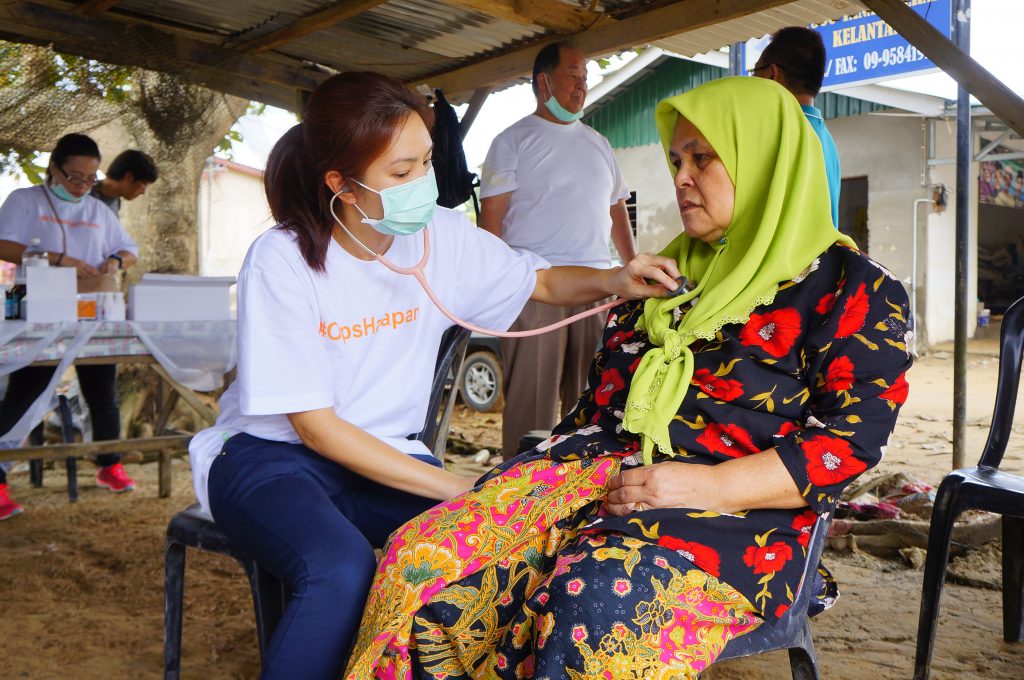More than a year into the COVID-19 pandemic, we are seeing major disruptions in the delivery of essential health services. As attention shifts to recovery, we have an opportunity to build health systems that are more resilient to future health shocks as well as to the impacts of climate change. National Adaptation Plan (NAP) processes provide a basis for ensuring that this happens.
Health has been identified as a priority sector by all countries that have submitted NAP documents to the United Nations Framework Convention on Climate Change (UNFCCC). However, the actions identified in these plans do not generally go far enough to cover the components of climate-resilient health systems, which include integrated risk monitoring and early warning systems, and a capacitated health workforce.
Only around half of the NAP documents submitted to NAP Central as of the end of December 2020 specifically identified impacts on the health system as an adverse effect of climate change, as discovered by the World Health Organization (WHO) and NAP Global Network. Our analysis also found significant gaps between the climate-sensitive health risks identified and the planned actions to address them. Nevertheless, many NAP documents included actions that address climate-sensitive diseases and contribute to strengthening the overall climate resilience of the health system.
As countries recover from the pandemic and move forward with their climate change adaptation plans, there are four key actions that governments and their partners can put into practice to build the climate resilience of health systems.
First: Understand all health-related vulnerabilities to climate change, including at the system level.
Though the majority of NAPs (89%) do include some assessment of health-related vulnerabilities to climate change, its comprehensiveness varies across the documents. The most commonly identified climate-sensitive health risks are vector- and water-borne diseases, along with the health impacts of extreme weather events.
More effort is needed to systematically assess where and why health systems are vulnerable to climate change and use the information to identify effective actions to build resilience. Recognizing that a more comprehensive analysis is needed, 40% of NAPs include further assessment of vulnerabilities in health systems as a planned action.
For example, Chile’s NAP includes adaptation actions to further understand the climate-sensitive health risks in their country, such as predicting the behaviour of zoonotic and vector-borne diseases associated with climate change.
Second: Bring together the right actors to establish integrated approaches for adaptation.
Collaboration between health sector actors, coordinating ministries for the NAP process, and other related sectors is essential. It ensures that NAPs are informed by sector planning and that sector-specific adaptation plans align with the overarching NAP.
Most of the NAPs reviewed (94%) indicate that health ministries played a leadership role in identifying adaptation actions for relevant sectors, which shows that some collaboration is already occurring. However, more effort is needed to ensure that this is an ongoing practice and that climate change becomes mainstreamed in all health programming. For example, only 5% of the documents reference an existing or planned climate change focal point in their health ministries.
One such country is Grenada, whose NAP includes a goal to establish climate change focal points in 12 government departments, including its health ministry.
Third: Gather the resources to implement health adaptation actions.
In NAPs that include cost estimates for adaptation actions, the average proportion of funding allocated for actions in the health sector is less than 1% of the total budget for the NAP. This is likely an underestimate of the resources needed to build climate-resilient health systems.
To ensure that adequate resources are in place for health adaptation actions, countries will need to strategically combine funding from different sources and target resources appropriately to generate results at the systemic level.
NAP processes provide an opportunity for the health sector to access financing for adaptation from funding streams such as the Green Climate Fund (GCF). There is also support available for accessing health-related climate finance—for example, the WHO is a GCF readiness delivery partner and can support countries in developing proposals for health adaptation actions.
Fourth: Monitor, evaluate, learn, and adjust approaches to better protect health.
As countries establish their monitoring, evaluation, and learning systems for adaptation, there is an opportunity to incorporate key indicators of health and climate-resilient health systems. At the same time, the data collected in the health sector, such as mortality and morbidity related to heat stress, can be an important input to monitoring climate change impacts and the potential effectiveness of adaptation efforts.
NAP processes, by their nature, present important opportunities to put these ideas into action to build climate-resilient health systems. To learn more, browse the joint report from the WHO and NAP Global Network that analyzes the integration of health into NAP documents and the quality criteria for Health NAPs developed by the WHO.
